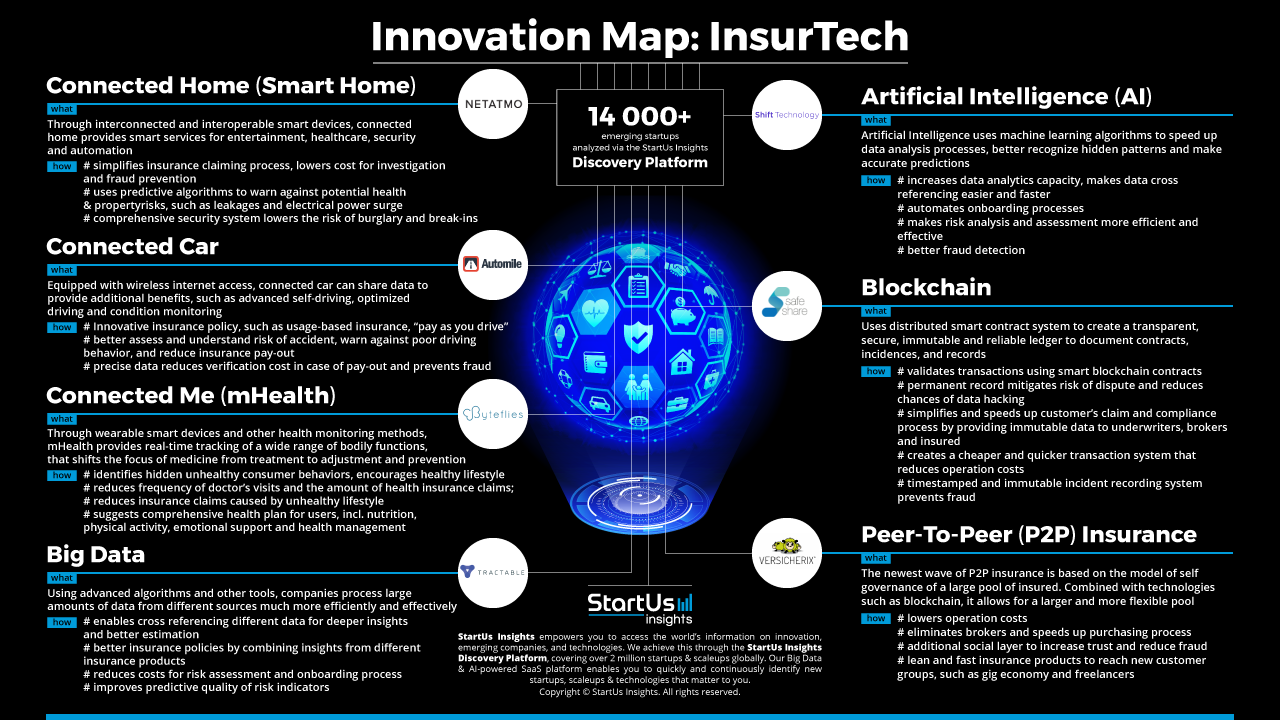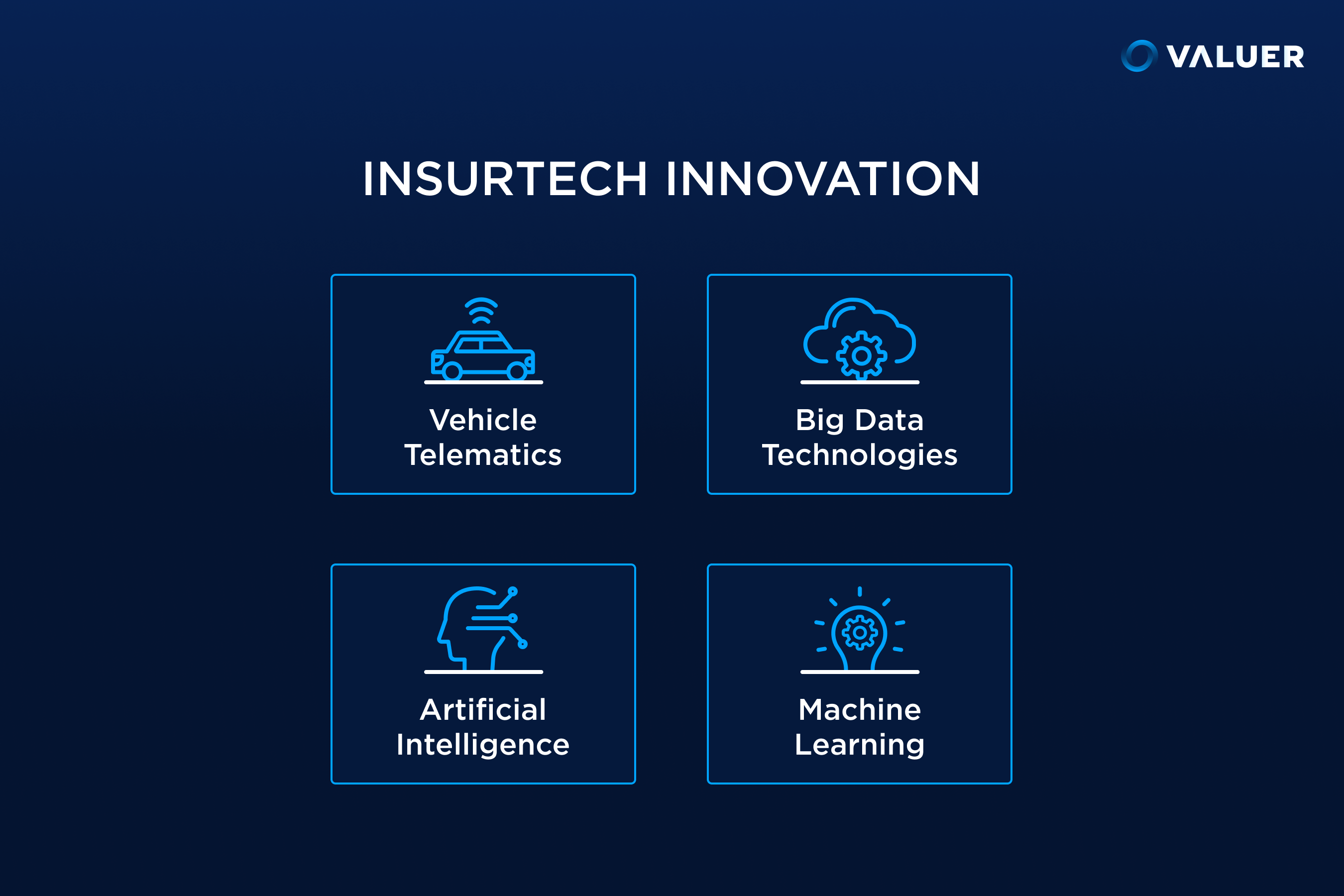Insurtech Innovations: Revolutionizing the Future of Insurance
The insurance industry is undergoing a radical transformation, thanks to the rise of insurtech innovations. Insurtech, a blend of “insurance” and “technology,” refers to the integration of cutting-edge technologies like artificial intelligence (AI), blockchain, big data, and IoT to improve and streamline traditional insurance models. These innovations are reshaping the landscape by enhancing customer experiences, improving operational efficiency, and reducing costs.
In this article, we will dive deep into the most impactful insurtech innovations that are driving this revolution, discussing their benefits, challenges, and real-world applications.

What Are Insurtech Innovations?
Insurtech innovations refer to the various technological advancements that are transforming the insurance sector. These innovations typically leverage emerging technologies to improve efficiencies in underwriting, claims processing, fraud detection, customer service, and overall policy management.
Key Technologies Powering Insurtech Innovations:
- Artificial Intelligence (AI): AI helps insurers automate claims, enhance underwriting accuracy, and provide personalized customer service.
- Big Data Analytics: Analyzing large datasets enables insurers to assess risk more accurately and offer tailored products.
- Blockchain: Used for enhancing transparency, reducing fraud, and improving claims management.
- Internet of Things (IoT): IoT devices collect real-time data to optimize risk assessments and prevent claims.
- Cloud Computing: Cloud-based platforms enable faster processing and easier scalability of insurance operations.
Top Insurtech Innovations Changing the Industry
1. AI-Powered Underwriting and Claims Processing
One of the most notable insurtech innovations is the use of AI in underwriting and claims management. AI automates the entire process, enabling insurers to assess risks, provide real-time quotes, and process claims faster than ever before.
- AI for Underwriting:
AI algorithms analyze vast amounts of data to evaluate risk and determine the price of insurance policies more accurately. -
AI for Claims Processing:
AI can automatically process claims by reviewing submitted documents, photos, and videos, reducing human intervention and speeding up settlements.
Example:
Lemonade, an insurtech company, uses AI to process claims in minutes, ensuring faster payouts to customers.

2. Blockchain for Transparent and Secure Transactions
Blockchain technology is playing a significant role in enhancing transparency, security, and trust in the insurance sector. It creates a decentralized ledger that records all transactions securely, which is ideal for automating claims and reducing fraud.
- Blockchain for Fraud Detection:
Blockchain provides an immutable record of every transaction, making it easier to detect fraudulent claims. -
Blockchain for Smart Contracts:
Smart contracts allow insurers and policyholders to create self-executing agreements, automating various processes such as claims settlements.
Example:
B3i, a blockchain consortium, is developing solutions to improve efficiency and reduce fraud in the reinsurance sector.
3. Usage-Based Insurance (UBI) Enabled by IoT
Usage-based insurance (UBI) is another key innovation powered by Internet of Things (IoT) devices. UBI leverages real-time data to calculate premiums based on individual behavior rather than traditional models that rely on demographics or historical data.
- IoT Devices for Real-Time Data:
Devices such as connected cars, smart home sensors, and wearables provide real-time data, enabling insurers to assess risk on an individual basis. -
Pay-as-You-Go Models:
UBI enables a more customized approach to pricing, allowing policyholders to pay premiums based on their actual usage, like the distance driven in a car or the frequency of gym visits.
Example:
Metromile, a car insurance company, uses a connected device to track miles driven and offer pay-per-mile insurance, making it cost-effective for low-mileage drivers.

4. Big Data and Predictive Analytics
Big data and predictive analytics are two key technologies driving smarter decisions and personalized products in the insurance industry. These technologies help insurers predict future risks and provide individualized coverage based on the customer’s behavior, preferences, and even geographic location.
- Predictive Analytics for Risk Assessment:
Predictive models help insurers anticipate the likelihood of claims, optimize pricing strategies, and prevent fraudulent activities. -
Big Data for Personalization:
By analyzing vast datasets, insurers can provide highly personalized insurance policies that meet the specific needs of customers.
Example:
Allstate uses predictive analytics to evaluate customer behavior and offer customized discounts based on driving habits and claims history.
5. Digital Insurance Platforms and Customer Service Automation
With the rise of digital-first insurance models, many insurers are adopting cloud-based platforms to offer seamless digital experiences. These platforms are integrated with AI, chatbots, and automation tools to deliver efficient customer support and policy management.
- Chatbots for Customer Service:
AI-driven chatbots provide instant support, assist with policy queries, and even guide customers through the claims process. -
Omnichannel Platforms:
These platforms allow customers to manage their insurance policies, make payments, and file claims through multiple channels, including mobile apps, websites, and voice assistants.
Example:
Oscar Health uses AI and a digital-first approach to offer personalized health insurance plans and customer support via its app.
Benefits of Insurtech Innovations
- Cost Efficiency
- Automating processes reduces operational costs, leading to lower premiums for customers.
- Fraud detection technologies prevent fraudulent claims, saving insurers significant amounts of money.
- Enhanced Customer Experience
- Real-time processing and personalized policies create a more customer-centric insurance experience.
- Customers can interact with insurers through digital channels, improving accessibility and satisfaction.
- Improved Risk Management
- Predictive analytics and IoT devices help insurers assess risk more accurately and adjust premiums accordingly.
- Real-time data ensures that insurers can proactively address potential issues before they escalate.
- Faster Claims Processing
- AI and blockchain-driven systems speed up claims settlements, enabling faster payouts and improving customer trust.
Challenges in Insurtech Adoption
Despite the numerous benefits, the adoption of insurtech comes with its challenges:
- Regulatory Compliance:
Insurers must navigate complex regulatory frameworks when implementing new technologies, especially around data privacy and security. -
Integration with Legacy Systems:
Integrating modern technologies with outdated legacy systems can be complex and costly. -
Data Privacy and Security Concerns:
With the increasing reliance on customer data, insurers must ensure robust cybersecurity measures are in place to protect sensitive information.
FAQs
1. How is insurtech improving the insurance industry?
Insurtech innovations are enhancing efficiency, transparency, and customer experience by leveraging technologies like AI, blockchain, and IoT for tasks such as underwriting, claims processing, and risk assessment.
2. What is usage-based insurance?
Usage-based insurance (UBI) uses real-time data collected from devices like connected cars or wearables to personalize premiums based on individual behavior or usage patterns.
3. How does AI benefit the insurance sector?
AI benefits insurance by automating tasks like claims processing, risk assessment, and customer support, allowing for faster and more accurate decision-making.
4. What are the biggest challenges of insurtech?
Key challenges include regulatory compliance, integration with legacy systems, and data privacy concerns.
Conclusion
The insurtech revolution is transforming the insurance industry, offering smarter, more efficient, and customer-friendly solutions. From AI-driven underwriting to blockchain for fraud prevention, these innovations are reshaping the future of insurance.
As technology continues to evolve, insurers who embrace these changes will be better equipped to meet the demands of the modern consumer while staying ahead of the competition. By understanding and leveraging insurtech innovations, the insurance industry can look forward to a more innovative, secure, and cost-effective future.
For more information on the latest trends in insurtech and to stay updated on the next wave of innovations, visit Insurtech Innovation Hub.
End of Article

